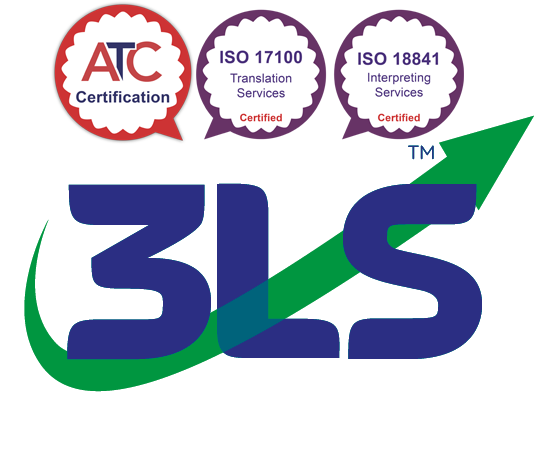Happy Arabic Language Day!
Today on World Arabic Language Day, along with some 360 million Arabic speakers we celebrate by sharing a little of our knowledge and a few nuggets.
Kitchen love…
Here’s a cutesy Arabic phrase you’ve probably not encountered… and a very good example of why real live human translators are likely to remain indispensable!
Here’s the Arabic:

– which translates literally as ‘a pot that’s found its lid’ but means in fact, ‘when you’ve found your other half’.
Try machine translating THAT!
Isn’t it cute though? Adds a whole new romance to cooking…

What’s in a name?
Country names are often intriguing – their study is a whole thing in its own right, but here’s a few gems around our Arabic Language Day theme:
• Lebanon is believed to derive from the Semitic root “lbn” meaning “white” and is thought to refer to the snowy mountains of Lebanon.
• Bahrain means “two seas”, although which two seas is a matter of some (not always polite!) debate. Other claimants include the bays lying to east and west, the seas found to the north and south of the country, and – more conceptual than geographic – the salt and fresh waters.
• Morocco in Arabic is meghreb, the root of the word, “gharb”, meaning West. “Morocco” is in fact an abbreviation – the full name is al-Mamalakah al-Maghribiyyah, meaning the Kingdom of Morocco, but it could also mean the Western Kingdom. You can see why the abbreviated form’s used! And there’s more – “meghreb” also means “the place where the sun sets”, so the Arabic name for Morocco could be interpreted as “the land of the sunset” – which as anyone who’s enjoyed a Moroccan sunset will know, can look truly magnificent.
A few language bits… (well, we are a language company!)
Did you know that Arabic letters have 4 different forms? It’s complicated… and it all depends on whether they’re alone in splendid isolation, or are found at the start, in the middle, or at the end of a word. Which adds a whole extra twist to learning to write the language!
Did you also know that as a result of the Moorish Empire, which for some 800 years stretched across most of Spain and Portugal to almost reach Barcelona, Arabic has left its mark in a wide range of commonly-used words?
In English for example we have apricot, giraffe, guitar, and mattress; in Spanish you’ll find aceituna (an olive), naranja (an orange), and zanahoria (a carrot), while French boasts aubergine, échec (a failure), and chiffre (a number or digit).
Can you come up with more? Think words starting with “al” – so algebra and alchemy along with – perhaps surprisingly – alcohol, and many more. This great Wikipedia page has dozens, with their (often fascinating) derivations!
Not this way – that way! Or – maybe the other way…?
Most people know Arabic is written from right to left, right? Or is it left? Because weirdly numbers in Arabic text go the other way, from left to right – so reading Arabic accounts for example, your eyes have to change direction dozens of times! That’s not the only weirdness – Western numbering – like 123.45 – is referred to as Arabic numbering. So what’s the numbering used in Arabic called? Well – confusingly, it’s Eastern Arabic (a.k.a. Indo-Arabic). So in a very literal sense – go figure…!
Anything else on the table?
Funny you should ask – tables are the next thing to mention! Tables of numbers, and tables of contents, all need “flipping” (the usual term usually for converting a left-to-right to a right-to-left layout), and the same applies to any sequenced content – so for example assembly instructions, with a series of partial assembly images, need to be reversed and so does the series of images…
For all these reasons, Arabic translation – and DTP/typesetting if applicable – really is FAR better left to professional language services providers. We’ve been doing this for over 30 years.
Love is a many-splendored thing…
… something reflected in Arabic, which has at least 11 words for it, each representing a different level or aspect of falling in love, from attraction through to the madness from loss of love. This example of a wide range of words for a single Western one isn’t uncommon – Arabic is said to have over 300 words for “lion”, reflecting the importance of the beast in Arabic history and lore.
Want to learn more?
The best way to learn about how a language works, is to learn the language. Arabic isn’t easy (!) but well worth the effort, as our own Arabic linguist Kate affirms. If you’d like to learn Arabic yourself, here’s a few useful tips to reinforce what your language course will teach you:
• Try to read Arabic articles or stories for 10-15 minutes a day – initially you’ll get just occasional words, but as you learn you’ll glean more every day!
• Listen to Arabic news, series or films – it’s a great way to lock-in what you’ve learned, as well as to pick-up new vocabulary that may have evolved so recently it isn’t even in the course…
• Practise speaking Arabic whenever you can – and if you’ve no-one to speak with, talk to yourself! In the car or while walking, try to describe to yourself in Arabic what you see or want. Just ignore the funny looks you’ll get – we do!
